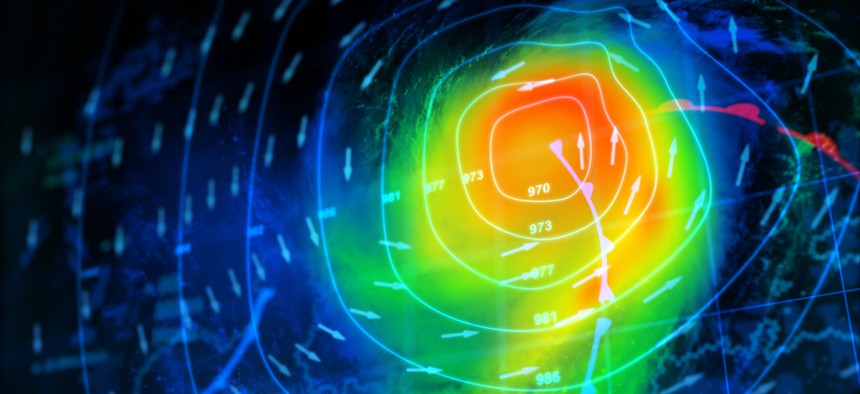NOAA Celebrates Weather Satellite Removal From GAO’s High Risk List

Andrey VP/Shutterstock.com
The National Oceanic and Atmospheric Administration successfully navigated a major challenge to one of its weather satellite systems that could have derailed U.S. weather forecasting.
In 2013, the Government Accountability Office pointed its auditing flashlight on a potential gap in weather satellite coverage that could have threatened the accuracy and integrity of U.S. weather forecasts.
At the time, two multibillion satellite programs necessary to replace NOAA’s fleet of aging weather satellites were either delayed, running up costs or mired in management crisis, landing its polar-orbiting satellite program on GAO’s High Risk List and firmly in Congress’ crosshairs.
Six years and three successful satellite launches later, NOAA employees celebrated Thursday after GAO officially removed the agency’s weather satellite system from its high-risk list.
“After our polar satellite program spent six long years on the GAO’s High Risk List, I’m very pleased to announce that due to all the dedication and professionalism by NESDIS, NOAA, and our NASA partners, we are off the list,” said Dr. Steve Volz, director of the NOAA’s satellite and information office, in an email to employees. “Today, NOAA is operating the most sophisticated technology it has ever flown in both the polar and geostationary orbits, capturing more precise observations of the world’s atmosphere, land and waters. And data from the advanced instruments are improving the accuracy and timeliness of our short-term forecasts and weather prediction 3-to-7 days out.”
GAO officials met with NOAA extensively over the years over the weather satellites, including as recently as February, Volz said in the email. And because Congress treats programs or projects on GAO’s High Risk list with extra scrutiny, Volz and other NOAA officials were routinely asked to testify on the satellite systems’ progress over the years.
NOAA celebrated two major triumphs in early 2019: The successful operation of GOES-17, the second of the government’s $11 billion next-gen geostationary weather satellites; and the announcement that the first satellite in its Joint Polar Satellite System, NOAA-20, was operating as its primary polar-orbiting satellite, measuring the world’s land, atmosphere and water round-the-clock.
Together, the two new satellite systems will produce more than 30 times the data than previous satellite systems, radically improving the quality and volume of data that flows into weather models used by the National Weather Service, National Hurricane Center and other organizations.
“We have maintained our commitment to continuity, today and into the future, and earned our position as the trusted source of environmental data,” Volz told employees. “The U.S. no longer faces the grim prospect of satellite data gaps in the polar orbit, which looked like a real possibility in 2011 because of projected cost overruns and launch uncertainty. While we can celebrate today’s news from the GAO, NOAA has plenty more to accomplish through the successful launches of the rest of the JPSS and GOES-R constellation, and the full exploitation of the many new observations available.”
NEXT STORY: What Mark Zuckerberg Thinks People Want






